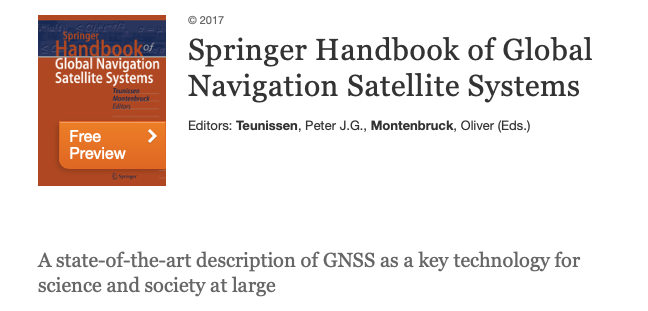About the IGS
The International GNSS Service (IGS) has ensured open access, high-quality GNSS data products since 1994. These products enable access to the definitive global reference frame for scientific, educational, and commercial applications – a tremendous benefit to the public, and key support element for scientific advancements.
The IGS at a Glance
- A voluntary federation of over 200 self-funding agencies, universities, and research institutions in more than 100 countries/regions; working together to provide the highest precision GPS satellite orbits in the world.
- Providing free and open access to the highest precision products available for scientific advancement and public benefit. These products support a wide variety of applications that touch millions of users in virtually all segments of the global economy
- Producing products that support realization of the International Terrestrial Reference Frame while providing access to tracking data from over 400 worldwide reference stations
- Working for the continuous development of new applications and products through Working Groups and Pilot Projects
- Supporting geodetic research and scholarly publications
- Functioning as a component of the Global Geodetic Observing System (GGOS) and member of the World Data System (WDS)
Mission
The International GNSS Service provides, on an openly available basis, the highest-quality GNSS data, products and services in support of the terrestrial reference frame, Earth observation and research; positioning, navigation and timing; and other applications that benefit science and society.
To learn more about the IGS Mission, and how it is benefitting society, please refer to the IGS Strategic Plan
Vision
A better understanding of the Earth through the application of GNSS.
Organizational Values
Fundamental to the IGS are key values that are shared across the organization, these are:
- Advocacy of an open data policy, with data and products openly available,
- Welcome contributions from and participation with all organizations,
- Effective reliability through redundancy of IGS components,
- Technical evolution through “friendly competition”,
- Dedicated engagement with policy entities to raise mutual awareness of IGS and geodesy in general.
Guiding Documents
In order to ensure the IGS conducts its business in an orderly and optimal way, the following guiding documents were created. They include the IGS Terms of Reference, which lays the foundation for the organization; the Strategic Plan, which outlines the organization’s short and long-term goals and objectives; Site Guidelines for all IGS sites; as well as charters and other policy documents for IGS components. Learn More
Products
The IGS, as a component of the Global Geodetic Observing System, operates a global network of GNSS ground stations, data centers, and data analysis centers to provide data and derived data products that are essential for Earth science research; multi-disciplinary positioning, navigation, and timing (PNT) applications; and education. The IGS Reference Frame Coordinator determines tracking site coordinates and velocities in the International Terrestrial Reference Frame (ITRF), and organizes the IGS contribution to ITRF. Learn More
IGS products include:
- GNSS satellite ephemerides
- Earth rotation parameters
- Global tracking station coordinates and velocities
- Satellite and tracking station clock information
- Zenith tropospheric path delay estimates
- Global ionosphere maps
These products support Earth science analyses and other efforts, such as
- Improving and extending the International Terrestrial Reference Frame (ITRF) maintained by the International Earth Rotation and Reference Systems Service (IERS),
- Monitoring deformation of the Earth,
- Monitoring Earth rotation,
- Monitoring the troposphere and ionosphere,
- Determining orbits of scientific satellites, and other diverse applications.
Components
IGS components are key operational elements of the organization. Components include entities such as Data and Analysis Centers, which ensure the highest quality products available; the Central Bureau, which administers the day-to-day management of the IGS; the Governing Board and Associate Members, who sustain the organization through their efforts; as well as Pilot Projects and Working Groups, which continuously drive the organization forward. Learn More
The foundation of the IGS is a global network of over 400 permanent, continuously operating, geodetic quality stations tracking GPS, GLONASS, Galileo, BeiDou, QZSS, and SBAS. Learn More
Station data is archived at four IGS Global Data Centers and multiple Regional Data Centers. Analysis Centers regularly process the data and contribute products to the Analysis Center Coordinator, who produces the official IGS combined products.
The IGS core product set — satellite orbits, clocks, Earth rotation parameters, and station positions — is augmented by newer products born from IGS Working Groups (WG) and Pilot Projects (PP). Pilot Projects aim at developing a new product using data from the IGS network, and Working Groups work on a particular topic related to the IGS components. Learn More.
The Multi-GNSS Experiment (MGEX) has been set-up by the IGS to track, collate and analyze all available GNSS signals. This includes signals from the BeiDou, Galileo and QZSS systems, as well as from modernized GPS and GLONASS satellites and any space-based augmentation system (SBAS) of interest. Analysis centers will attempt to estimate inter-system calibration biases, compare equipment performance and further develop processing software capable of handling multiple GNSS observation data. Learn More.
The International GNSS Service (IGS) Real-time Service is a GNSS orbit and clock correction service that enables Precise Point Positioning (PPP) at worldwide scales. The RTS products enable applications such as scientific testing, geophysical monitoring, hazard detection and warning, weather forecasting, time synchronization, GNSS constellation monitoring, imagery control and many other public-benefit applications. Learn More.
Organization
The IGS organization (see Organization Chart) consists of the following components:
- Associate Members (AM), persons affiliated with contributing organizations that are the electorate body of the IGS Governing Board spend majority of their time on work contributes to the IGS.
- Governing Board (GB), the international body which sets policy and direction for the IGS. Some positions are elected and others are appointed.
- Central Bureau (CB), executive office provides overall coordination and day-to-day management of the information systems, network and Infrastructure.
- Data Centers (DCs), archive and provide open access to IGS data and products.
- Analysis Centers (ACs), analyze the IGS station data to form submissions to IGS products such as orbits, clocks, and station positions.
- Analysis Center Coordinator (ACC), combines the ACs’ submissions to form the “classic” IGS products (GPS orbits, clocks).
- Associate Analysis Centers (AACs), produce specialized or derived products with coordinators that combine AC submissions to form IGS Products.
- Working Groups (WGs), incubator through Pilot Projects with particular focus on components, products and infrastructural elements within Working Groups.
- Infrastructure Committee (IC), a permanent body established to ensure that the data requirements for the highest quality GNSS products are fully satisfied while also anticipating future needs and evolving circumstances.
- Station-Operating Agencies, manage the IGS network stations according to the IGS Site Guidelines and transmit the data to IGS Data Centers.
- Contributing Organizations, any agency or entity that participates in at least one of the above-mentioned components.
IGS and the International Terrestrial Reference Frame (ITRF)
The IGS contributes to, extends, and densifies the International Terrestrial Reference Frame (ITRF). The ITRF provides an accurate and consistent frame, or datum, for referencing positions at different times and in different locations around the world. The IGS realization of ITRF, which extends the number of stations significantly, makes the reference frame easily accessible.
In particular, the accuracies of IGS products are sufficient for the improvement and extension of the International Terrestrial Reference Frame (ITRF), the monitoring of solid Earth deformations, the monitoring of Earth rotation and variations in the liquid Earth (sea level, ice-sheets, etc.), for scientific satellite orbit determinations, ionosphere monitoring, and recovery of precipitable water vapor measurements.
To learn more, visit Supporting the ITRF.

Citing the use of IGS Data and Products
By accessing data, products, and any other information from the IGS, users agree to appropriately cite and attribute these resources to providers and their sponsors, acknowledgment of IGS and its contributing organizations, and to adherence to professional and ethical standards. Citation can be found below:
Johnston, G., Riddell, A., Hausler, G. (2017). The International GNSS Service. Teunissen, Peter J.G., & Montenbruck, O. (Eds.), Springer Handbook of Global Navigation Satellite Systems (1st ed., pp. 967-982). Cham, Switzerland: Springer International Publishing. DOI: 10.1007/978-3-319-42928-1.
The book is currently available for purchase and download on the Springer website. For additional links, please visit Official Citation.
AFFILIATIONS + EXTERNAL RELATIONS
IGS remains active in engaging with diverse organizations that have an interest in geodetic applications of GNSS. Visit Affiliations + External Relations to learn more.
Discover the International GNSS Service
Are you interested in joining the IGS or participating in one of our workshops/meetings? Visit our events page to see upcoming events or visit our Why Join the IGS? page to learn how to participate in the IGS. Sign up for the IGS Mailing Lists to stay up to date with the latest news.
Connect with the IGS
What is the IGS?
The IGS is a voluntary federation of many worldwide agencies that pool resources and permanent GNSS station data to generate precise GNSS products. In general, you can think of the IGS as the highest-precision international civilian GPS community.
What types of data are available?
A table outlining each data type, including sampling intervals, formats, and access details, is kept up-to-date at IGS Products.
What are IGS Products?
IGS products are formed from a combination of independent results submitted by the IGS Analysis Centers. To the extent that the effect of data and mismodeling among different Analysis Centers are independent, properly weighted combinations of results can be superior. In this way, the IGS products benefit in precision, accuracy, stability, reliability, and robustness compared to the results of any individual AC.
A table of products with their update schedules, formats, accuracies, access details, etc. is available at IGS Products
The IGS Analysis Center Coordinator’s page is also an informative source about recent performance of the classic IGS products.
What are IGS Stations?
An IGS station conforms to the IGS Site Guidelines and is listed on IGS network.
How can I learn more about the IGS?
Teunissen, Peter J.G., & Montenbruck, O. (Eds.), Springer Handbook of Global Navigation Satellite Systems (1st ed., pp. 967-982). Cham, Switzerland: Springer International Publishing. DOI: 10.1007/978-3-319-42928-1.
This book includes a full chapter on IGS and it is currently available for purchase and download on the Springer website. To view articles citing the IGS Article or to download the IGS chapter, please visit Official Citation.
Other IGS publications (particularly the most recent Annual Report) are found here.
What is an associate member?
The Associate members of the IGS are described in the terms of reference as “… Persons representing organizations which participate in any of the IGS components and who are not members of the Governing Board are considered IGS Associate Members.” The Associate Members, along with the Governing Board Members, are responsible for the nomination and election of the incoming Governing Board members every two years. The Associate Members also become IAG Affiliate Members through.
Find a list of associate members at IGS Associate Members.
Where can I become associate member?
Apply to become an IGS Associate Member on the IGS Associate Members page. Read the IGS Associate Membership Guidelines (2019) to learn more.
How can I see/download data pertaining the IGS Network?
You can access the network and see maps at IGS Network.

